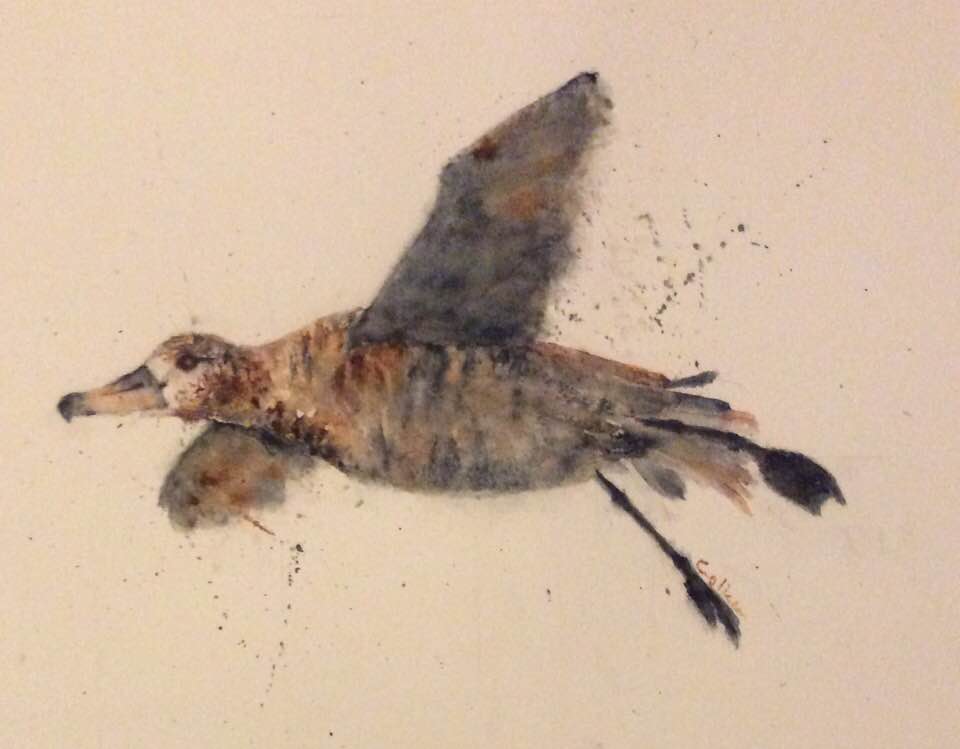
Black-footed Albatross, artwork by Colleen Laird for ACAP
Caroline Fox (Canadian Wildlife Service, Environment and Climate Change Canada, Nanaimo, British Columbia, Canada) and colleagues have published open access in the journal Marine Ecology Progress Series on spatial overlaps of Black-footed Phoebastria nigripes, Laysan P. immutabilis and Short-tailed P. albatrus Albatrosses with Canadian longline fisheries.
The paper’s abstract follows:
“Fisheries bycatch mortality poses a primary threat to the majority of the world’s 22 albatross species, 15 of which are at risk of extinction. Although quantitative estimates of albatross bycatch are often unavailable due to a relative or total absence of monitoring, spatial overlap between fisheries and albatrosses is often used to estimate the extent of interaction, a proxy for exposure to bycatch, and to inform avoidance and mitigation actions. Using comprehensive records of commercial demersal longline and trap fishing and survey information for albatrosses (black-footed albatross Phoebastria nigripes, Laysan albatross P. immutabilis, short-tailed albatross P. albatrus), the extent of spatial potential interaction was estimated in Canada’s Pacific coast waters and examined across breeding and non-breeding seasons. The distributions of albatrosses and longline and trap fisheries were found to substantially overlap, with potential interaction hotspots concentrated along the continental shelf break. Trap fisheries reported 1 albatross bycatch incident, suggesting that these fisheries are responsible for negligible albatross mortalities. In contrast, >80% of recorded albatross bycatch incidents occurred within 10 km of albatross-longline fisheries hotspot locations, providing evidence that longline-albatross potential interaction hotspots represent actual areas of elevated bycatch mortality risk. Indicative of potential conservation concern, 60% of short-tailed albatross sightings occurred within 10 km, and 93% within 30 km, of longline-albatross potential interaction hotspots. By contributing knowledge regarding albatross-fisheries interactions, in addition to undertaking the first evaluation of albatross-fisheries hotspots with recorded bycatch incidents on Canada’s Pacific coast, this study represents a step towards enhancing albatross conservation through bycatch avoidance and mitigation.”
With thanks to Ken Morgan.
Reference:
Fox, C.H., Robertson, C., O'Hara, P.D., Tadey, R. & Morgan, K.H. 2021. Spatial assessment of albatrosses, commercial fisheries, and bycatch incidents on Canada's Pacific coast. Marine Ecology Progress Series 672: 205-222.
John Cooper, ACAP Information Officer, 20 August 2021

 Español
Español  English
English  Français
Français